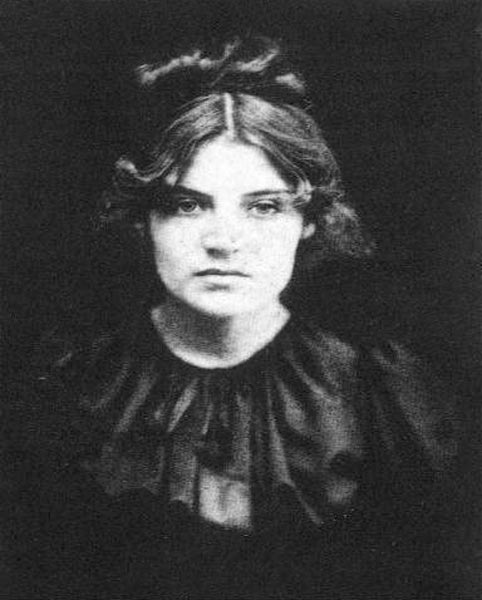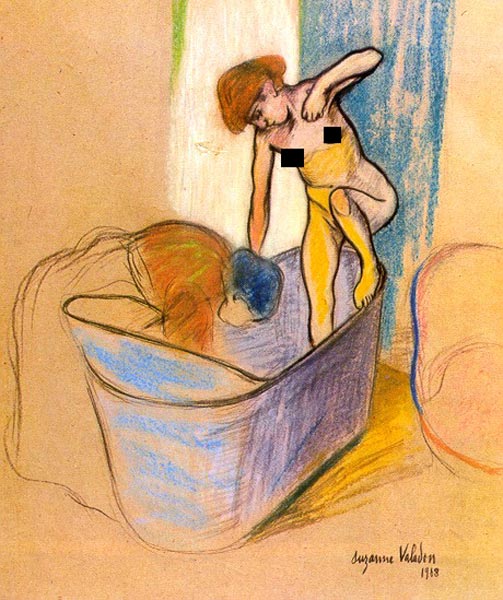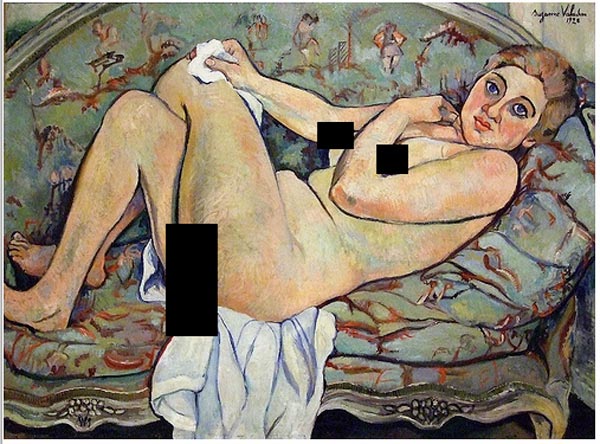| Suzanne Valadon | |
|---|---|
 |
|
| Born | Sep. 23, 1865 |
| Died | Apr. 7, 1938 |
| Nationality | French |
| Field | Painting |
| Works | View Complete Works |
Suzanne Valadon (1865-1938) was a French painter, particularly known for her female nudes. She was among the first women to build up an extensive body of work in this field and challenged some of the orthodoxy of contemporary male artists. Although the nude female form was Valadon’s main subject, she also produced a number of landscape drawings as well still lifes and portraits.
Personal Life
Valadon was born near Limoges in 1865, her birth name was Marie-Clementine. As a teenager she worked as an acrobat in a circus, but when she was 16 years old, she suffered a fall. After this, she left the circus and worked as a model for some of the most prominent artists of the time, including Toulouse-Lautrec and Renoir. Valadon’s personal life was colorful: Renoir was only one among a number of painters with whom she had affairs. Her son Maurice Utrillo, who eventually became a successful artist, was born when Valadon was 18 years old.
Significant Works
 Although Valadon was already relatively well known by 1893, in which year Edgar Degas purchased three of her drawings, it was in the early 20th century that her most famous paintings were produced. Among them is Nu de dos devant une glace (Nude from the back in front of a looking-glass) in which a woman is shown stretching in front of a mirror. The woman is not looking into the mirror, instead remaining engrossed in the feel, both physical and emotional, of her own body. John Berger suggested that the mirror’s “male gaze” represented vanity, and that here Valadon was deliberately avoiding that emotion on the part of her subject.
Although Valadon was already relatively well known by 1893, in which year Edgar Degas purchased three of her drawings, it was in the early 20th century that her most famous paintings were produced. Among them is Nu de dos devant une glace (Nude from the back in front of a looking-glass) in which a woman is shown stretching in front of a mirror. The woman is not looking into the mirror, instead remaining engrossed in the feel, both physical and emotional, of her own body. John Berger suggested that the mirror’s “male gaze” represented vanity, and that here Valadon was deliberately avoiding that emotion on the part of her subject.
By the time of World War One, Valadon was becoming a truly famous painter – her first solo exhibition opened in 1915 – although her personal life meant that she was not considered entirely respectable. This was reflected in her painting Casting the Net in 1914 which depicts three male nude figures as fishermen. Even in the early 20th century, it was still unusual for women to paint male nudes, but here Valadon met that uneasiness head-on and produced a bold, striking, and spirited piece that was applauded for the strength of its engagement with its viewers.
Artistic Techniques and Style
 Valadon was an admirer of the Impressionists from a young age and this feeling stayed with her into later life. Even as late as The Blue Room, painted in 1923, she was still giving her subjects a bright and clear appearance, through the use of vibrancy and boldness in their coloring, though by this time her style was a little more toward the Post-Impressionist style than her original influences. Many of Valadon’s nude studies showed scenes relating to bathing, a subject which she found endlessly fascinating.
Valadon was an admirer of the Impressionists from a young age and this feeling stayed with her into later life. Even as late as The Blue Room, painted in 1923, she was still giving her subjects a bright and clear appearance, through the use of vibrancy and boldness in their coloring, though by this time her style was a little more toward the Post-Impressionist style than her original influences. Many of Valadon’s nude studies showed scenes relating to bathing, a subject which she found endlessly fascinating.
Unlike many of her contemporary male artists, Valadon was careful to place her female nude subjects in a living, crowded world, rather than to paint them almost as a form of statue isolated from the rest of existence. To this end, she tended to avoid smooth and simple body patterns, instead choosing to dwell on the coltish awkwardness of a young woman who is moving as she intends, rather than as depicted by the idealized eye of many male painters. To further enhance the sense of domesticity, Valadon usually gave her figures accessories such as beds and mirrors.